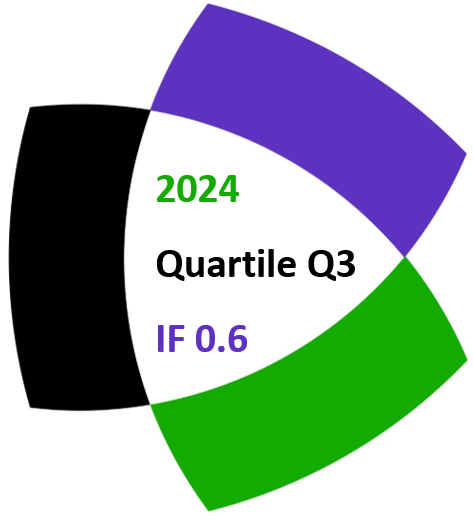Junyao Peng
Notes on Number Theory and Discrete Mathematics
Print ISSN 1310–5132, Online ISSN 2367–8275
Volume 25, 2019, Number 3, Pages 1–12
DOI: 10.7546/nntdm.2019.25.3.1-12
Full paper (PDF, 187 Kb)
Details
Authors and affiliations
Junyao Peng ![]()
Chongqing Fuling No.15 Middle School
Chongqing, 400000, China
School of Mathematics and Statistics, Changsha University of Science and Technology
Hunan Provincial Key Laboratory of Mathematical Modeling and Analysis in Engineering
Changsha, 410114, China
Abstract
By the basic properties of Pell equation and the theory of congruence, we investigate the problem about the linear combination of two triangular numbers is a perfect square. First, we show that if 2n is not a perfect square, the Diophantine equation
![]()
has infinitely many positive integer solutions (y,z). Second, we prove that if m,n are some special values, the Diophantine equation
![]()
Keywords
- Triangular number
- Diophantine equation
- Pell equation
- Positive integer solution
2010 Mathematics Subject Classification
- 11D09
- 11D72
References
- Bencze, M. (2012). Proposed Problem 7508, Octogon Mathematical Magazine, 13(1B), 678.
- Chen, J. P. (2012). The squares with the form
 , Natural Science Journal of China West Normal University, 33(2), 196–198, 217.
, Natural Science Journal of China West Normal University, 33(2), 196–198, 217. - Cohen, H. (2007). Number theory, Vol. I: Tools and Diophantine Equations, Graduate Texts in Mathematics.
- Dickson, L. E. (1934). History of the Theory of Numbers, Vol. II: Diophantine Analysis, Dover Publications.
- Eggan, L. C., Eggan, P. C., & Selfridge, J. L. (1982). Polygonal products of polygonal numbers and the Pell equation, Fibonacci Quarterly, 20(1), 24–28.
- Guan, X. G. (2011). The squares with the form
 , Natural Science Journal of Ningxia Teachers University, 32(3), 97–107.
, Natural Science Journal of Ningxia Teachers University, 32(3), 97–107. - Hu, M. J. (2013). The positive integer solutions of the Diophantine equation
 , Journal of Zhejiang International Studies University, 4, 70–76.
, Journal of Zhejiang International Studies University, 4, 70–76. - Ke, Z., & Sun, Q. (1980). Talk about the Indeterminate Equation, Harbin Institute of Technology Press.
- Le, M. H. (2007). The squares with the form
 , Natural Science Journal of Hainan University, 25(1), 13–14.
, Natural Science Journal of Hainan University, 25(1), 13–14. - Ran, Y. X., Yan, S. J., Ran, Y. P., &Yang, X. Y. (2008). The squares with the form
 , Journal of Tianshui Normal University, 28(5), 9–15.
, Journal of Tianshui Normal University, 28(5), 9–15. - Sun, Z. H. (2009). On the number of representations of
 by
by  , Journal of Number Theory, 129(5), 971–989.
, Journal of Number Theory, 129(5), 971–989. - Wu, H. M. (2011). The square numbers with the form
 Journal of Zhanjiang Normal College, 32(3), 20–22.
Journal of Zhanjiang Normal College, 32(3), 20–22.
Related papers
- Zhang, Y., Jiang, M., & Tang, Q. (2025). Three Diophantine equations concerning the polygonal numbers. Notes on Number Theory and Discrete Mathematics, 31(4), 736-746.
- Jiang, M., & Li, Y. C. (2020). The linear combination of two polygonal numbers is a perfect square. Notes on Number Theory and Discrete Mathematics, 26(2), 105–115.
Cite this paper
Peng, J. (2019). The linear combination of two triangular numbers is a perfect square. Notes on Number Theory and Discrete Mathematics, 25(3), 1-12, DOI: 10.7546/nntdm.2019.25.3.1-12.


